Monday, March 9, 2020
Petra
This was a day we’d been anticipating since the beginning of our trip. As we arrived in the dark last night, it was nice to see the hotel and views from it.
I guess business is really slowing down at Petra because of Coronavirus, but by the time we arrived at the Visitor’s Centre, there were already about 20 buses in the lot. This is the number one tourist attraction in Jordan - I suspect due largely to Indiana Jones and the last Crusade.
The workers here come from a new village built above the ancient city. They were originally cave dwellers in this area (photo further on in the blog), but were persuaded by the government to move and given the privilege of being the only workers at this tourist site.
In about the first century BC, Petra was is the capital of the Nabataean Empire. The area grew rich because of its trade in frankincense, myrrh and spices. The area was annexed by Rome and thrived until a large earthquake destroyed much of the city in 363AD.
There are various forms of transportation you can use to get around here other than just walking, including camels, donkeys, horses and horse drawn carriages. We stayed on our feet.
The first 700 m from the Visitor’s Centre was a fairly open path and soon we saw the first signs of human activity - Djin blocks and the Obelisk tomb.
And then the canyon began. This gorge or Siq as it is known here, was a result of tectonic action, like the ancient earthquake. The rock formations here are stunning, with a lot of ochre colours. There are also amazing streaks of iron running through the stone.
After more than a kilometre of the Siq, you come upon the best known feature of Petra, the Treasury. If I said we were blown away it would be an understatement! I guess they originally thought treasure was stored in the urn above the entrance, thus the bullet holes in the column in an effort to drain it of its wealth. The Treasury was actually a mausoleum. There is no entrance to it and there is no historic cup of Christ here.
Further down the road was the Street of Facades, a row of monumental Nabataean tombs carved in the cliff face. From here, many people were taking donkeys or going by foot to the high place of sacrifice. We missed that.
We also went into one of cave dwellings.
Next was a theatre large enough to hold 4000 people that had been carved into the side of the mountain. The back wall of the theatre with its Roman columns, was rebuilt by the Romans.
At this point, 3/4 of the way in to the entire route, we decided enough was enough and we turned around and went back. Our walk up and down hill over mostly good surface but also some original Roman stone roads, was around 6km. Our interpretation of the next two photos is an elephant’s head in one - that’s our take - and a shepherd with camel - that’s their take.
When we left Petra, we made a stop at the Palace Hotel because they have a bar and our hotel is Muslim dry. I guess this part of Jordan is very traditional, where if the women are seen at all, they are burkaed and spent most time indoors with eight kids. Back at our hotel, we played Bite Me on a bench outside our room.y usus utter c tree c
I managed to snag a French blanc de blanc at the Palace and with our Lays chips we had a Jordanian happy hour. Before sunset I took a stroll around this massive hotel site and these of some “end of another fabulous day” shots.
Subscribe to:
Post Comments (Atom)






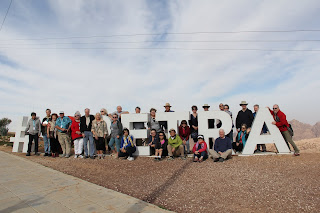





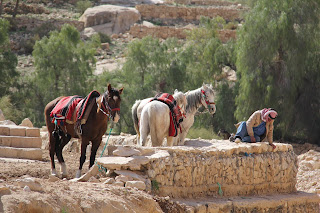






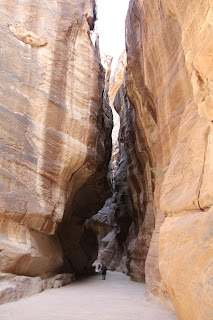






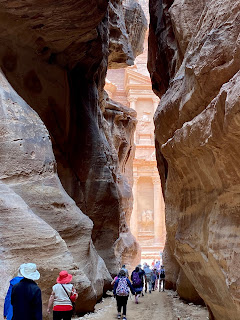





















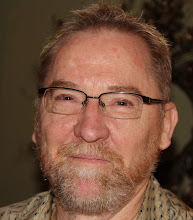
No comments:
Post a Comment